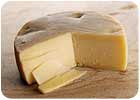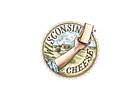
Wisconsin cheesemakers are making more mixed milk cheeses, such as Gran Canaria, from Carr Valley Cheese. Made with milk of cows, goats and sheep, Gran Canaria offers an intense nutty flavor, which earned it “Best of Show” at the American Cheese Society Competition in 2004.
The American food consumer stayed the course in 2006, bolstering current trends and securing their influence. This is good news for cheese, according to the Wisconsin Milk Marketing Board (WMMB), a dairy farmer-funded organization that analyzes culinary data and information.
What Americans want is fresh, healthy, safe and very flavorful-the food attributes that define “quality.” American chefs continue to be prime influencers, extending their impact through cookbooks, television shows and their own food product lines. Supermarkets are responding with boutique concepts for organics, specialty and regional products.
“Cheese, one of the world’s oldest and most versatile foods, meets all the contemporary criteria for a highly desired food,” said Marilyn Wilkinson, a director of National Product Communications for WMMB. “Not that there haven’t been changes in this perennial favorite. In many ways, we’ve gone back to the future, revering traditional ways of making and aging a growing number of American originals.” In Wisconsin, the nation’s leading cheese making state, specialty cheese is a robustly growing segment- increasing at least 7% per year since 2002 with expectations for this trend to expand.
Dieting and cheese
When it comes to fresh, natural cheeses meet consumer desires for minimally processed foods. With a sparse ingredient list and no additives, natural cheeses continue their popularity. In fact, natural, exact weight cheese sales in traditional grocery stores enjoyed a 13% increase over the last 5 years while processed varieties declined by 11%.The healthy concept is more complicated with “fresh” being just one component. Consumer perceptions include both the nutrition and production aspects when it comes to defining this term. Some current research indicates Americans are actually changing their diets (versus talking about doing so) to include healthier choices. Food producers and manufactures are heeding the trend by adding vitamins and minerals. But cheese doesn’t have to go this supplemental route-it is a wholesome food, offering both calcium and protein in its natural form. And, amid the most current concerns about fat, cheese contains essentially no trans fats.
Today’s concerned American also takes agriculture-the way food is grown or nurtured-into the “healthy” consideration. Organic and sustainable agriculture are important perceived contributors to the trend. Wisconsin boasts more organic dairy farms than any state, and the pasture-grazing of dairy cows is on the increase. The desire for safe foods is also tied to agriculture practices as well as to processing procedures. The contemporary consumer values small production and locally grown products, preferences that are driving the artisan cheese movement in Wisconsin-where the average dairy farm houses just 86 cows-and throughout the country.
Big and bold flavor
When it comes to cheese, flavor can mean varieties, such as Blue or Asiago. Or it can mean adding flavors, such as herbs or smoke, or employing techniques, such as washing the rinds of cheese during aging with a brine or liquor, or by aging the cheeses in caves-either natural or simulated. These aged cheeses-such as Wisconsin Gruyère, Aged Cheddar or Gouda-have complex and distinctive flavors and star on chef cheese courses, a trend that continues in white tablecloth restaurants.Mixed-milk cheeses, the product of mixing cow’s milk with sheep or goat milk, are growing increasingly popular. The mixing of various milks allows cheese makers to exercise their creativity beyond what they can do with a single milk. Each milk can bring a different flavor, aroma or texture to the finished cheese, creating an end product with sophisticated and complex flavor nuances.
Consumers are willing to experiment beyond their traditional comfort zone to try new varieties and styles, such as these mixed-milk cheeses. The following Wisconsin cheese makers mirror how their counterparts across the country are trying to satisfy consumers’ growing desire for new tastes:
- Sid Cook of Carr Valley Cheese, Gran Canaria-This cheese took home the coveted “Best of Show” honor from the American Cheese Society in 2004. It is an intense, nutty blend of cow, sheep and goat milk.
- Bob Wills of Cedar Grove Dairy, Farko-Farko is a Danish-style cheese made from a mix of cow and sheep milk. The cheese is reminiscent of a Danish Havarti and was the fortunate and delicious result of an unintended oversupply of sheep’s milk.
- Janet Butler of Butler Dairy, Camembert-This cheese is a new take on the original French version, made with sheep’s milk and cow’s milk and cream. The French original is traditionally made with all cow milk.
- Speaking of flavor, cheese and beer share common characteristics in aroma and taste, making them a perfect complement to one another. The grain used to produce beer is the same as that fed to milk-producing cows. As a result, some experts contend that beer and cheese are a perfect pairing. Additionally, the carbonation in beer lifts the palate and brings out many nuances in the cheese.
Among these mega trends, a number of “trendlets” affecting cheese have emerged in 2006, and they include:
- More one-of-a-kind, small production American original cheeses. Wisconsin’s specialty and artisan cheese makers are crafting products with unique qualities, styles and names, such as Carr Valley Gran Canaria, Crave Brothers Farmstead Les Frères, Cedar Grove Faarko and Uplands Cheese Pleasant Ridge Reserve.
- Interest in Latin-inspired cheeses-from Hispanic to Spanish. The fastest growing U.S. population segment-Hispanics-impacts this growth, and these styles are going mainstream. The market thrust to promote the foods of Spain is leading Wisconsin cheese makers to make Spanish styles, among them Roth Kase USA with its GranQueso (Manchego style) and Vintage Van Gogh (Mahón style).
- Increased snacking. Along with the trend toward healthy eating, savory as well as sweet snacks are being consumed.
- Restaurants’ experimentation with flexible day parts, such as late lunches, late suppers and breakfast items around the clock, create opportunities for cheese.
- Sandwiches eaten increasingly as a home dinner entrée and made in more imaginative executions in restaurants, from casual to chic.
- Supermarkets’ pursuit of more interactive marketing techniques and more educational classes and demonstrations, including cheese pairings and ethnic cheese uses.
- New heights in cheese convenience with shredded blends diversifying to include not only ethnic-driven blends, but very specific combinations such as taco or bistro blends.
- The embrace of “healthy” salads by fast-food chains. Cheese is adding to their appeal.
- “Hot” cheese-friendly cuisines: lounge food and casual chic.

New from Wisconsin
As Americans are getting more adventurous with their food choices and seeking big flavor, Wisconsin cheesemakers continue to offer new specialty cheeses, adding to the state’s repertoire of 600 varieties, types and styles.- Beechwood Cheese Co. uses traditional Wisconsin cheesemaking methods to craft some of the state’s most unconventional cheese varieties. These uncommon cheeses caught the attention of Jamie and Bobby Deen, stars of the Food Network’s new program, Road Tasted. Jamie and Bobby sampled Uncle Charlie’s Chicken Soup Cheese-Monterey Jack flavored with chicken broth and celery and Chuckwagon Cheddar-a unique blend of Cheddar, Monterey Jack and BBQ spices. Beechwood Cheese has also developed a new flavored cheddar, Chipotle Ole, a stirred-curd Cheddar infused with chipotle chiles.
- VOD Gourmet has partnered with one of Wisconsin’s outstanding cheese manufacturers, Roth Käse, to age a fine Blue Cheese with smoky Kentucky Bourbon Whiskey and smooth California Port Wine, creating two American thoroughbred cheese delights, WhiskeyBlue and WineyBlue.
- Sugar Brook Farms has introduced a new line of unique cheese spreads crafted from Aged Wisconsin Cheddar and cream cheese: CheddaBlu, CheddaDew and CheddaBrew. CheddaBlu combines the rich and tangy flavor of blue cheese with the classic taste of cheddar. CheddaDew features Peppadew, a sweet and savory South African fruit. CheddaBrew melds two Wisconsin favorites, Bock beer and cheddar.